In a rare move, a sleepy cataclysmic variable blows its top and suddenly becomes a nova.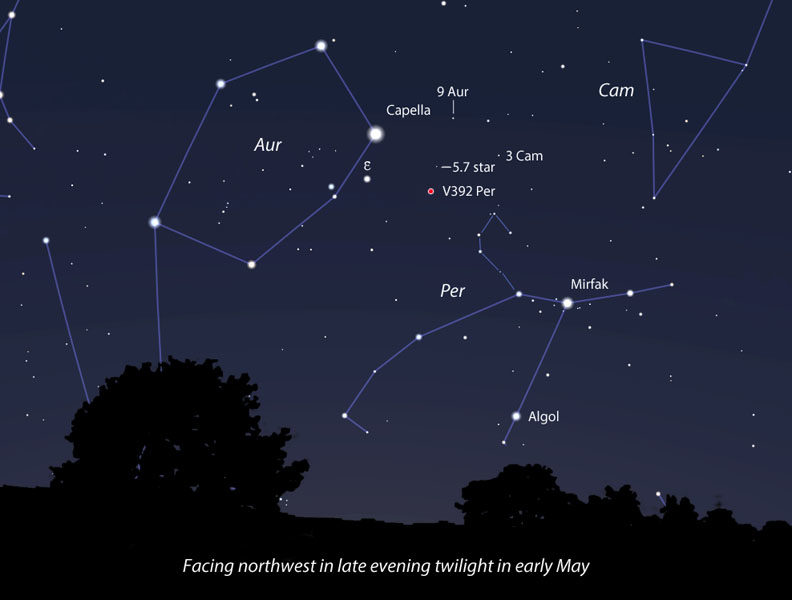
© StellariumAlthough low in the sky at nightfall, there's still time to observe the nova outburst. V392 Per is located near the junction of Auriga, Perseus, and Camelopardalis about 5° west of bright Capella. A more detailed AAVSO chart is below.
The dwarf nova V392 Persei, which only gets as bright as magnitude 14 during outburst, appears to have undergone a rare
nova outburst. The sudden and steep brightening was discovered photographically on April 29th by Yuji Nakamura of Japan, who recorded the star at magnitude 6.2. Spectra obtained shortly thereafter with the 2.4-meter Hiltner telescope on Kitt Peak
confirm the explosion as a nova.
Had the Moon not brightened the sky, the outburst would have been visible with the naked eye from a dark site.
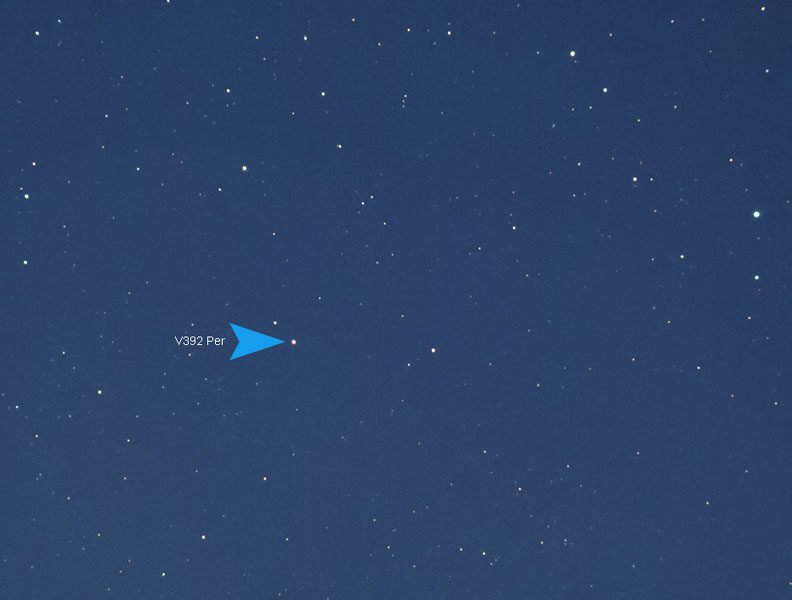
© Will GatorThere's a new luminary in the neighborhood. The nova stands out plainly in this short time exposure taken from Somerset in the UK last night.
As of this morning, May 1st, V392 Per has faded a magnitude to 7 and remains an easy catch in binoculars. There's no telling whether it will brighten further, continue to fade, or hit a standstill. One thing is certain:
dwarf novae rarely explode as novae. This is something very special, and I encourage you to grab your binoculars for a look.
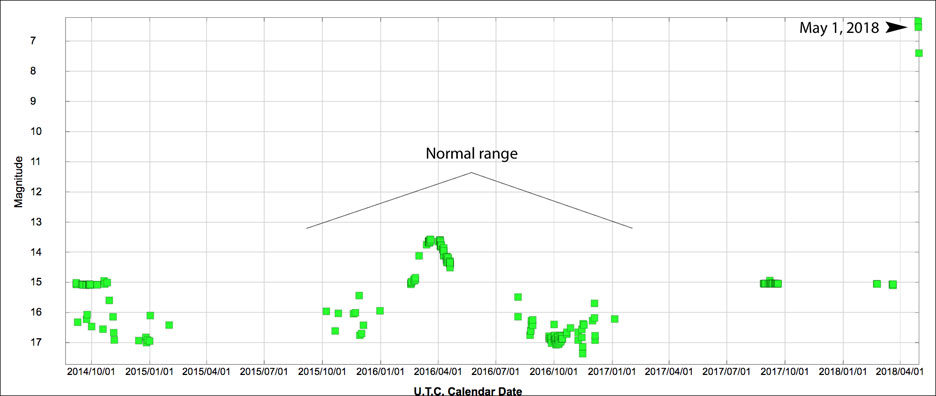
© AAVSOThis AAVSO light curve compiled from observations made by amateur astronomers reveals that V392 Per normally shines at magnitude 15 (with occasional minor outbursts). This remained true until the end of April, when it skyrocketed to magnitude 6.2 (right).
Dwarf novae are binary stars where the more massive star, a white dwarf, robs matter from a closely-orbiting lower mass companion. As the material spins into an accretion disk around the dwarf, variations in its flow and temperature cause the disk to periodically heat up and brighten. Through a telescope, the star swells 2 to 6 magnitudes in just a day or two. Catching one on the rise after seeing it at minimum for weeks is one of the more exciting sights in amateur astronomy.Two of the most famous dwarf novae are
U Geminorum in the winter sky and
SS Cygni in the summer.
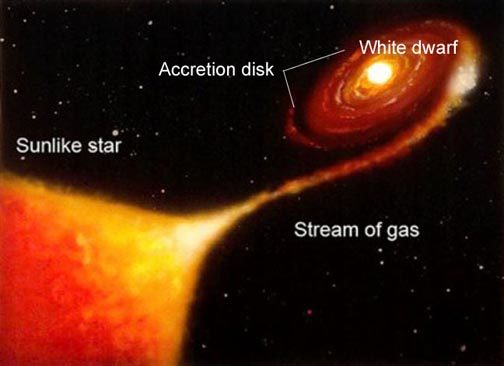
© NASAIn a typical dwarf nova, a Sun-like star orbits a planet-sized but massive white dwarf. The white dwarf draws material from the orbiting star into a spinning accretion disk.
Only
once in the history of dwarf novae observations has a star (V1213 Cen) transitioned to a nova. In a nova, material from the disk gets dumped onto the surface of the white dwarf, where it's compressed and heated to ignite in a much more powerful (and brighter) explosion. V392 Per shot up nearly 9 magnitudes and may brighten even more. Eruptions like this are predicted to recur on timescales of 10,000 to 1 million years.
You can stay in touch with the nova's daily behavior by going to the
AAVSO website and typing in the star's name in the
Pick a Star box. Then, select a link to either review recent observations, make a new light curve, or create a chart. Use the accompanying AAVSO chart to find the star and estimate its brightness. Click to enlarge, download, and print. Clear skies!
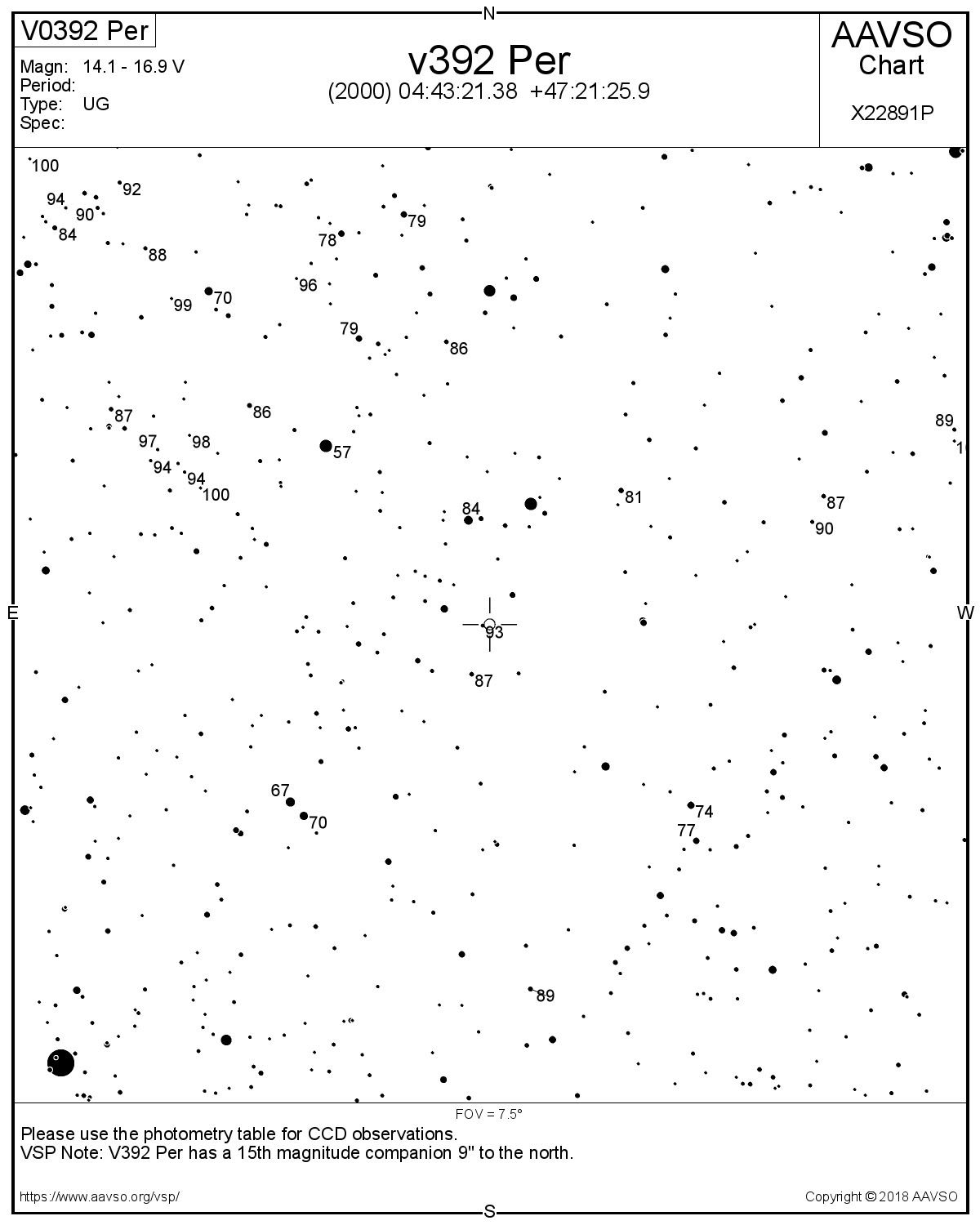
© AAVSOPrint out this AAVSO chart of V392 Persei. North is up, and the 5.7-magnitude star shown here (decimal omitted) is the same as the one marked on the wide-field map at the top of the page. The star is located at RA 04h 43′ 21″, Dec. +47° 21′ 26″.








Reader Comments
to our Newsletter